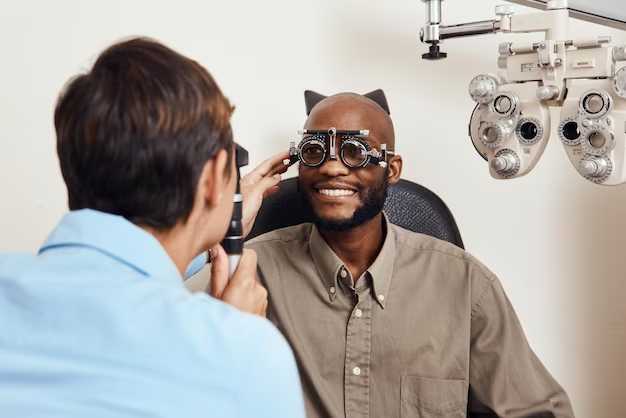
Choosing the right glasses for your eyes involves considering several factors to ensure optimal vision correction, comfort, and style. Here are some steps to help you choose the right glasses:
- Get a Comprehensive Eye Exam: Before choosing glasses, it's essential to have a comprehensive eye exam by an eye care professional (optometrist or ophthalmologist). This will determine your current prescription and identify any specific vision needs or eye conditions that may affect your choice of glasses.
- Know Your Prescription: Understand your prescription, including the degree of nearsightedness (myopia), farsightedness (hyperopia), astigmatism, and any other refractive errors. Your prescription will guide you in selecting the appropriate lenses for your glasses.
- Consider Lens Options: Depending on your prescription and lifestyle needs, you may have various lens options to choose from:
- Single Vision Lenses: Correct nearsightedness, farsightedness, or astigmatism.
- Bifocal or Trifocal Lenses: Provide multiple focal points for distance, intermediate, and near vision correction.
- Progressive Lenses: Offer seamless transition between different focal lengths without visible lines.
- High-Index Lenses: Thinner and lighter lenses for stronger prescriptions.
- Photochromic Lenses: Transition from clear to tinted in response to UV light exposure.
- Anti-reflective Coating: Reduce glare and reflections for improved clarity and comfort.
- Frame Selection: Choose frames that complement your face shape, personal style, and lifestyle preferences. Consider factors such as:
Face Shape: Determine your face shape (e.g., round, oval, square) and choose frames that balance and enhance your facial features.
Frame Size: Ensure that the frames are proportionate to your face size, neither too large nor too small, and fit comfortably without slipping or pinching.
Frame Material: Select from various frame materials such as metal, plastic, titanium, or acetate, considering factors like durability, flexibility, and weight. Frame Style: Explore different frame styles (e.g., full-rim, semi-rimless, rimless) and colors to find the ones that best suit your personality and preferences. Bridge Fit: Ensure that the bridge of the glasses sits comfortably on your nose without causing pressure or discomfort.
- Try Before You Buy: Visit an optical store or try online virtual try-on tools to experiment with different frame styles and sizes before making a decision. Consider seeking input from friends, family, or the optician for their opinions on which glasses suit you best.
- Comfort and Fit: Ensure that the glasses feel comfortable to wear and provide a secure fit without sliding down your nose or causing pressure points. Adjustments can be made by an optician to customize the fit for your face shape and ensure optimal comfort.
- Follow-up Care: After purchasing glasses, attend any follow-up appointments recommended by your eye care professional to ensure proper fit and visual correction. Make sure to clean and maintain your glasses regularly to keep them in good condition.
By following these steps and considering your prescription, lifestyle, and personal preferences, you can choose glasses that provide clear vision, comfort, and style for your eyes.
Copyright @ NARAIN EYE CARE